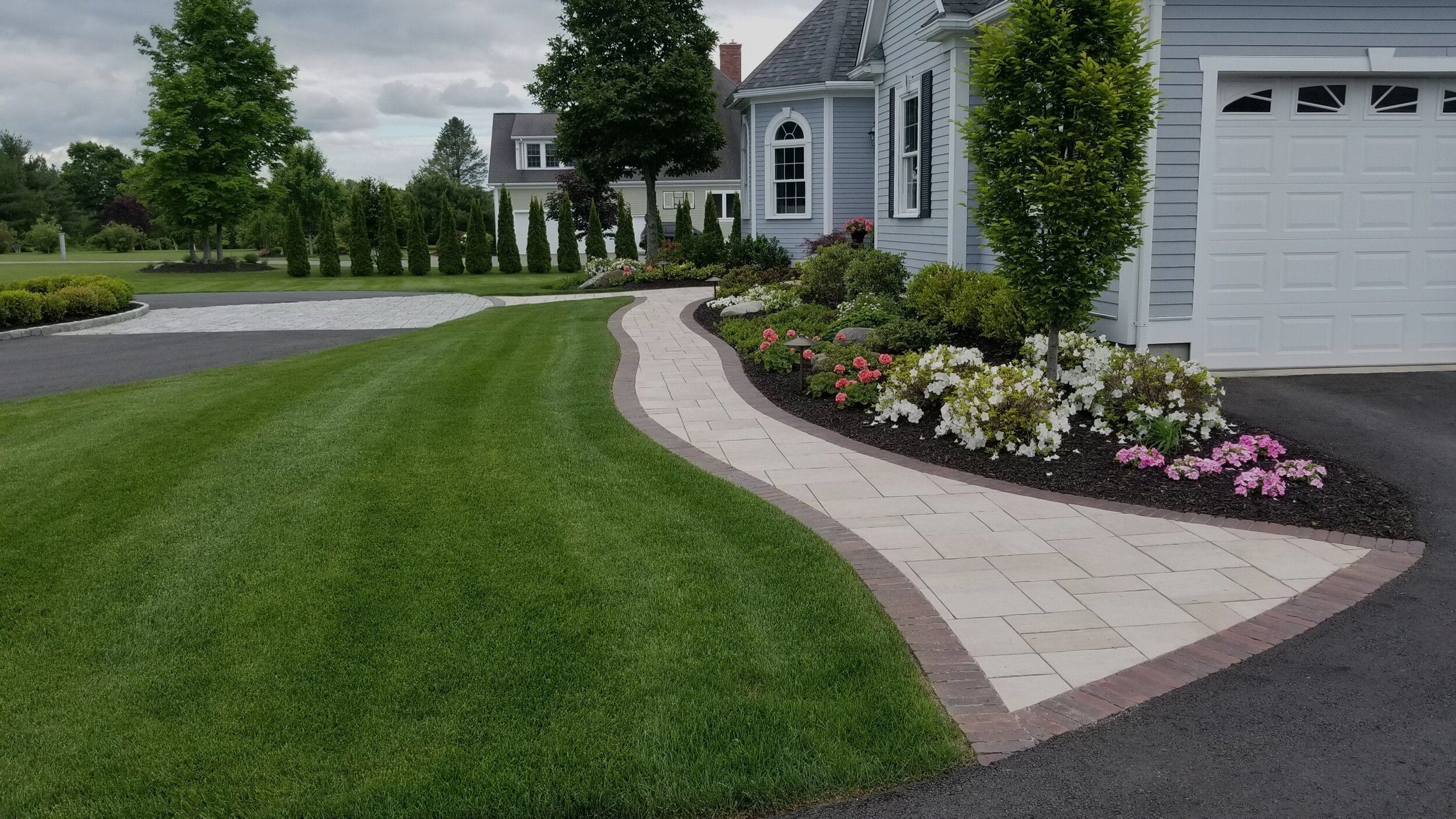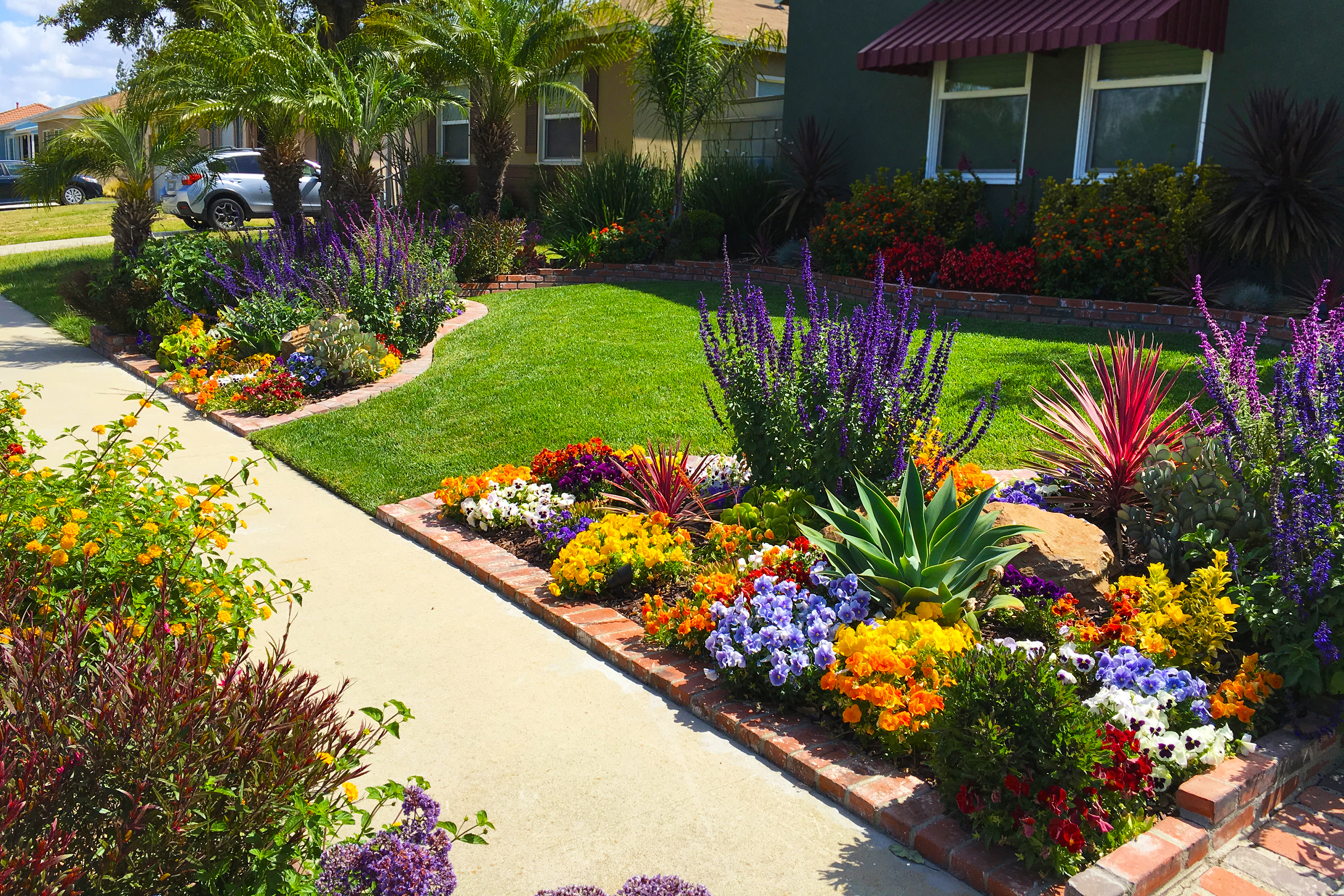Update Your Residential Or Commercial Property with Customized Palm Desert Landscaping Solutions
Update Your Residential Or Commercial Property with Customized Palm Desert Landscaping Solutions
Blog Article
A Comprehensive Overview to Designing and Implementing Effective Landscaping Solutions
The art and science of landscaping prolong beyond simple aesthetic appeals; they involve a thoughtful combination of design principles, ecological stewardship, and useful implementation. What methods can one use to guarantee these landscapes not just flourish however additionally flourish in consistency with their surroundings?

Understanding Landscape Design Concepts
One might question what fundamental elements add to efficient landscape design. At its core, effective landscape style rests on numerous key principles that direct the plan and selection of components within a room. These principles consist of unity, rhythm, equilibrium, and proportion, each serving to develop a harmonious exterior atmosphere.
Unity describes the cohesive partnership among numerous elements, ensuring that they function together cosmetically and functionally. Balance can be attained through asymmetrical or balanced arrangements, enabling the landscape to really feel stable and inviting. Proportion involves comprehending the range of elements in connection with each various other and the surrounding setting, advertising aesthetic harmony and comfort.

Analyzing Your Outdoor Space
Prior to applying the principles of landscape style, a comprehensive evaluation of your exterior space is important. This initial examination aids specify the range of your landscaping job and makes certain that your design aligns with the special features of your residential or commercial property. Begin by examining the measurements of your room, taking precise measurements to comprehend the offered location for numerous components such as gardens, patios, and pathways.
Next, observe the existing functions of your landscape, including topography, soil high quality, and drain patterns. These aspects significantly affect plant option and positioning. In addition, analyze the sunshine direct exposure throughout different areas throughout the day, as this will affect the kinds of plants that flourish in your garden.
Consider the microclimates created by frameworks, trees, and various other challenges, as they can impact temperature and moisture degrees. Take note of any type of existing plants or hardscape aspects that you wish to eliminate or keep. This comprehensive evaluation prepares for a well-informed and reliable landscape design remedy, ensuring that your layout is not only aesthetically pleasing yet likewise functional and lasting for years to find.
Sustainable Landscape Design Methods
These techniques not only promote eco-friendly balance but likewise boost the useful and aesthetic value of a landscape. Applying efficient irrigation systems, such as drip irrigation, decreases water waste and ensures that plants receive appropriate dampness (Palm Desert Landscaping).

Another efficient strategy is the tactical positioning of trees and shrubs to give natural windbreaks and shade, hence lowering energy prices (Palm Desert Landscaping). Rainfall gardens can be integrated right into the landscape Learn More Here layout to manage click to read more stormwater overflow properly, filtering pollutants before they get in rivers
Choosing the Right Plants
Choosing the right plants for your landscape is critical to achieving both visual charm and environmental consistency. The procedure begins with an understanding of your regional environment, dirt problems, and the specific microenvironments within your landscape. Evaluating aspects such as sunshine direct exposure, dampness degrees, and existing flora will help you choose plants that flourish in your distinct setting.
Consider integrating native plants, as they are well-adapted to regional conditions, need less maintenance, and support regional wildlife. Furthermore, choosing a diverse variety of varieties can boost biodiversity while lowering the threat of condition and parasite episodes. It is necessary to evaluate the development behaviors, growing durations, and seasonal colors of prospective plants to create a cohesive and dynamic landscape.
In addition, consider the meant use of the space; for example, if the location will certainly experience high foot web traffic, select resilient ground covers. By thoughtfully choosing plants that straighten with both your environmental requirements and aesthetic objectives, you can develop a lasting landscape that not only improves your residential or commercial property but also adds positively to the surrounding ecological community.

Implementation and Upkeep Approaches
Once the ideal plants have been selected for your landscape, the emphasis shifts to effective informative post application and recurring maintenance methods. Effective installation begins with appropriate website prep work, that includes soil screening to determine nutrient levels and pH, complied with by modifying the dirt as needed. Very carefully prepare plants according to their growth practices and light demands, making certain ample spacing to promote healthy growth.
Watering is a critical element of application. Establish a watering routine that takes into consideration the details demands of each plant species, adjusting for seasonal changes. Utilizing drip irrigation systems can enhance water efficiency and decrease runoff.
Maintenance techniques need to be carried out to make sure the durability and vigor of your landscape. Routine tasks include weeding, mulching, and pruning to control growth and prevent condition. Fertilizing needs to be conducted based upon dirt tests, giving the essential nutrients without over-fertilizing.
Monitoring for conditions and bugs is crucial; early discovery can stop considerable damage. Seasonal modifications to maintenance regimens, such as preparing and winterizing perennials for spring development, will ensure that your landscape continues to be visually enticing and healthy year-round.
Conclusion
Effective implementation and continuous upkeep further guarantee the durability and vigor of landscapes. By incorporating these elements, landscapes can be transformed right into lovely, useful environments that promote biodiversity and contribute positively to neighborhood wellness.
One could question what fundamental elements contribute to effective landscape style. At its core, successful landscape style pivots on several essential principles that direct the plan and choice of aspects within a room.Picking the right plants for your landscape is critical to achieving both visual appeal and ecological harmony. It is important to assess the development habits, growing durations, and seasonal shades of possible plants to develop a vibrant and cohesive landscape.
When the best plants have been chosen for your landscape, the focus changes to effective application and recurring maintenance methods.
Report this page